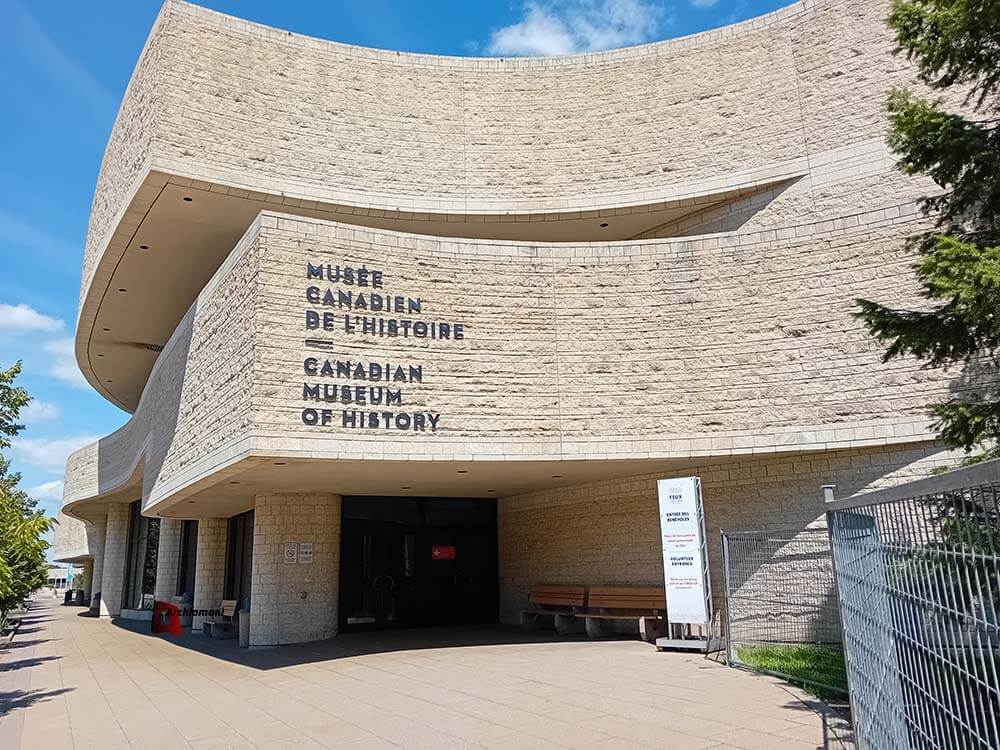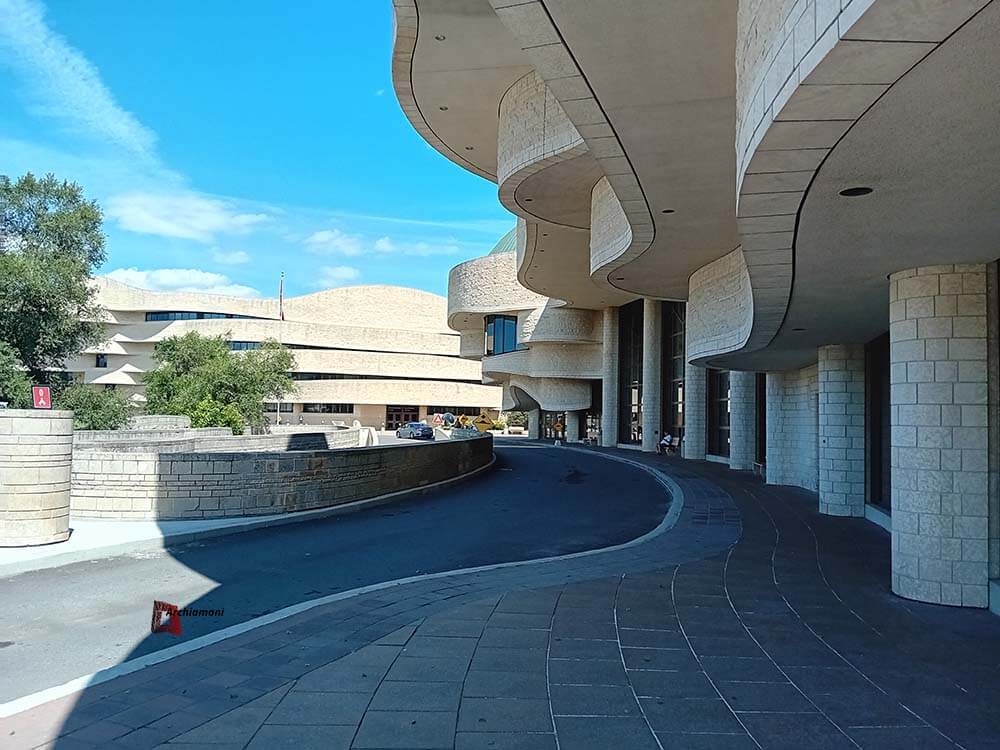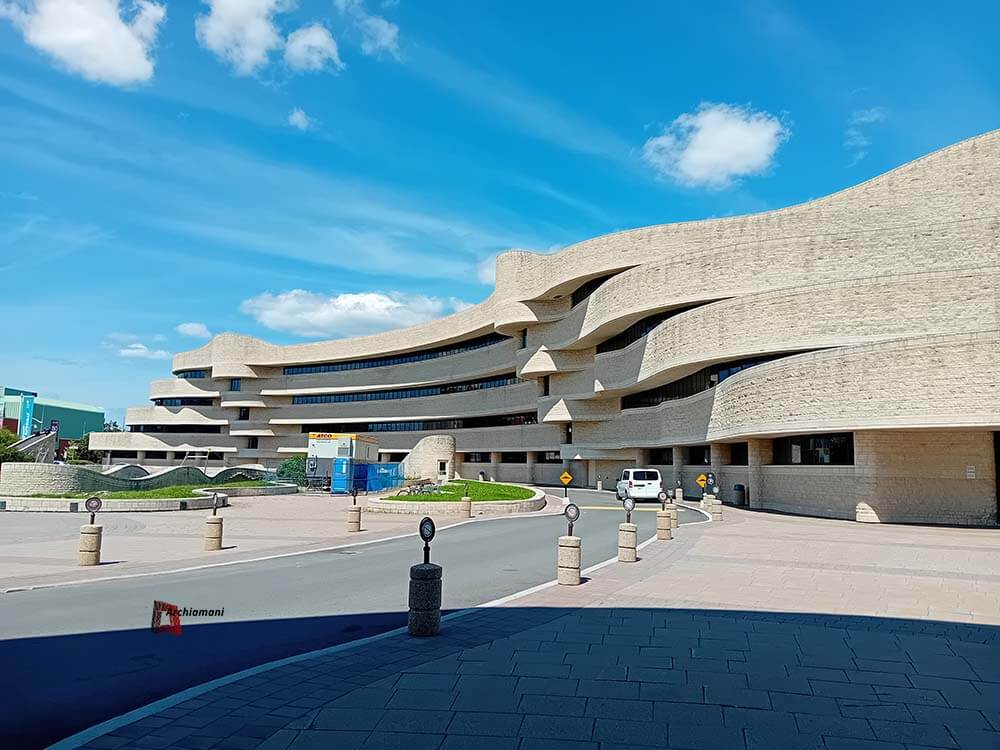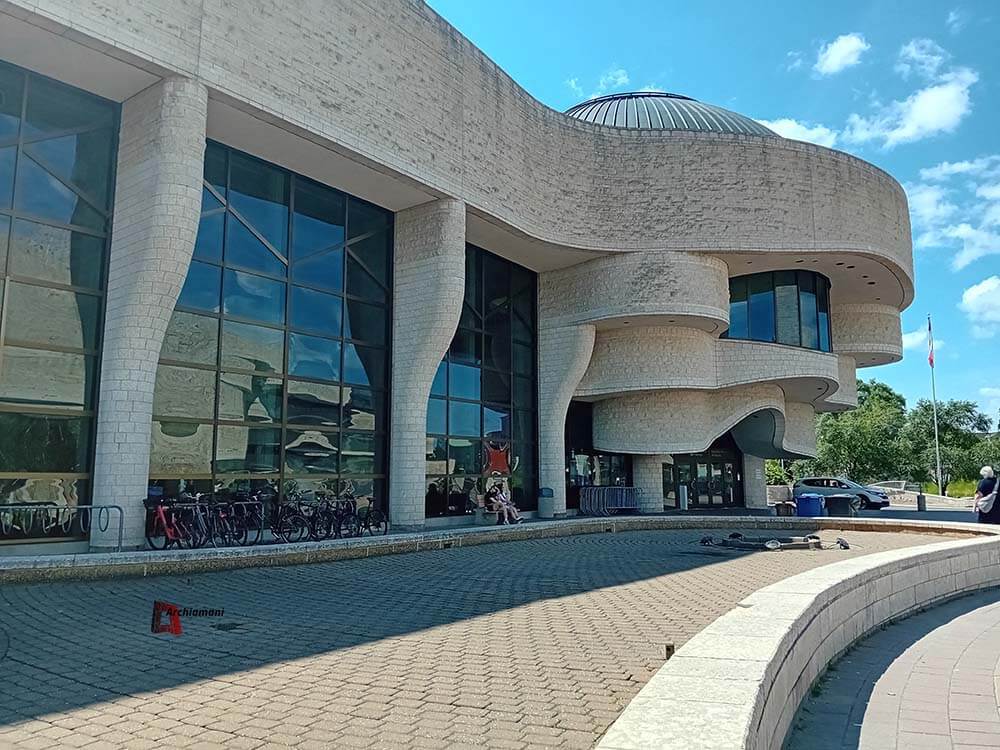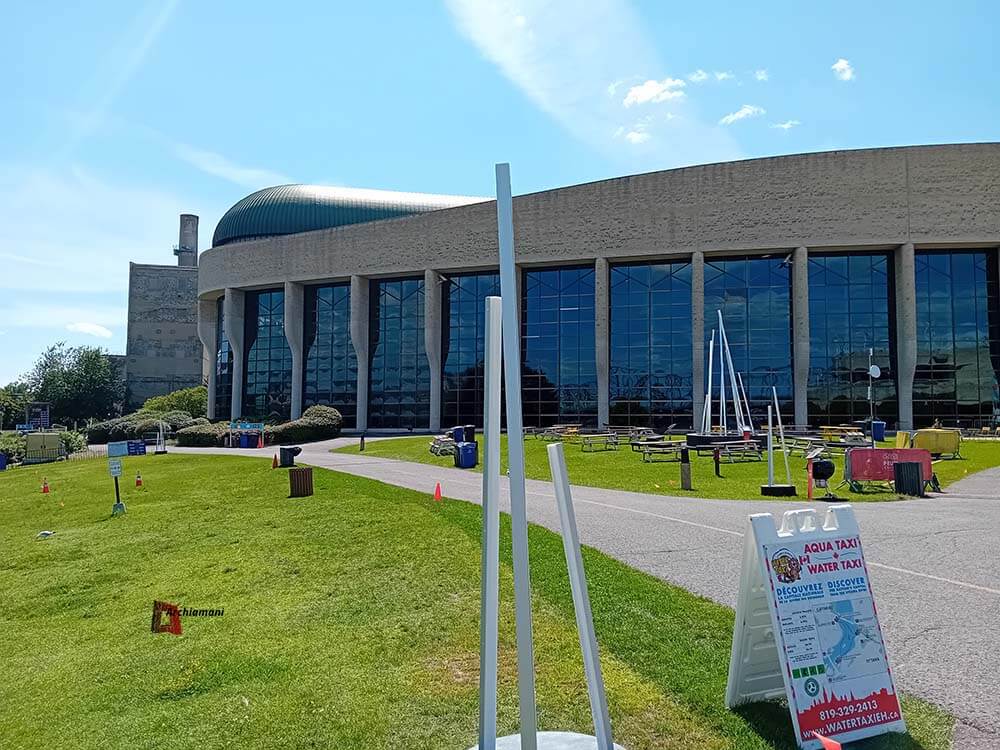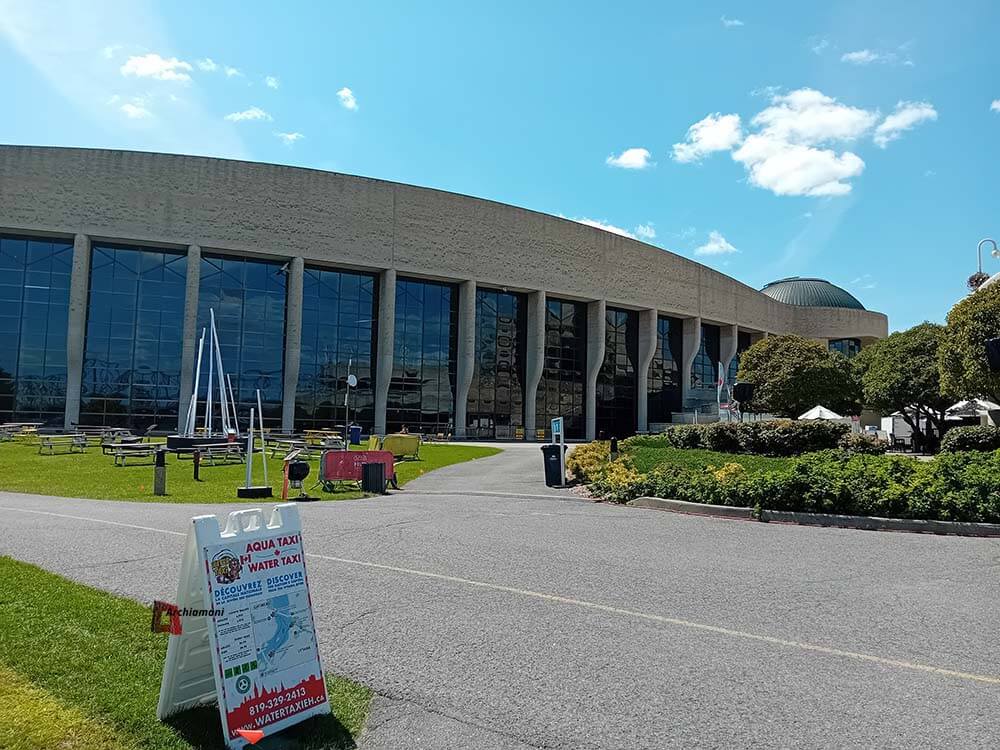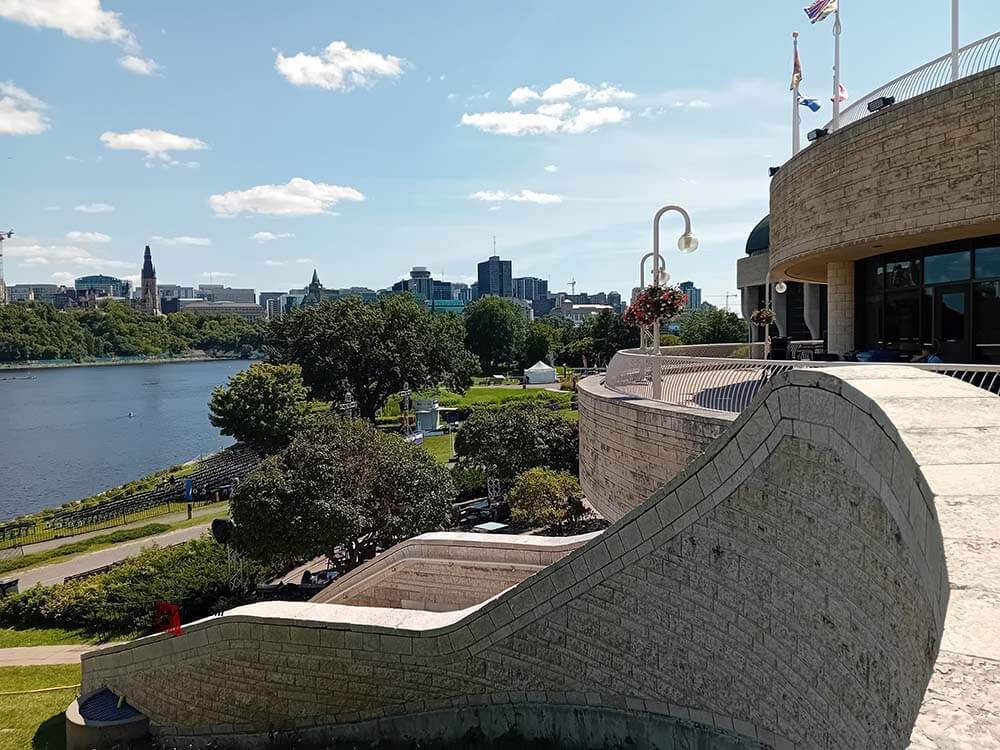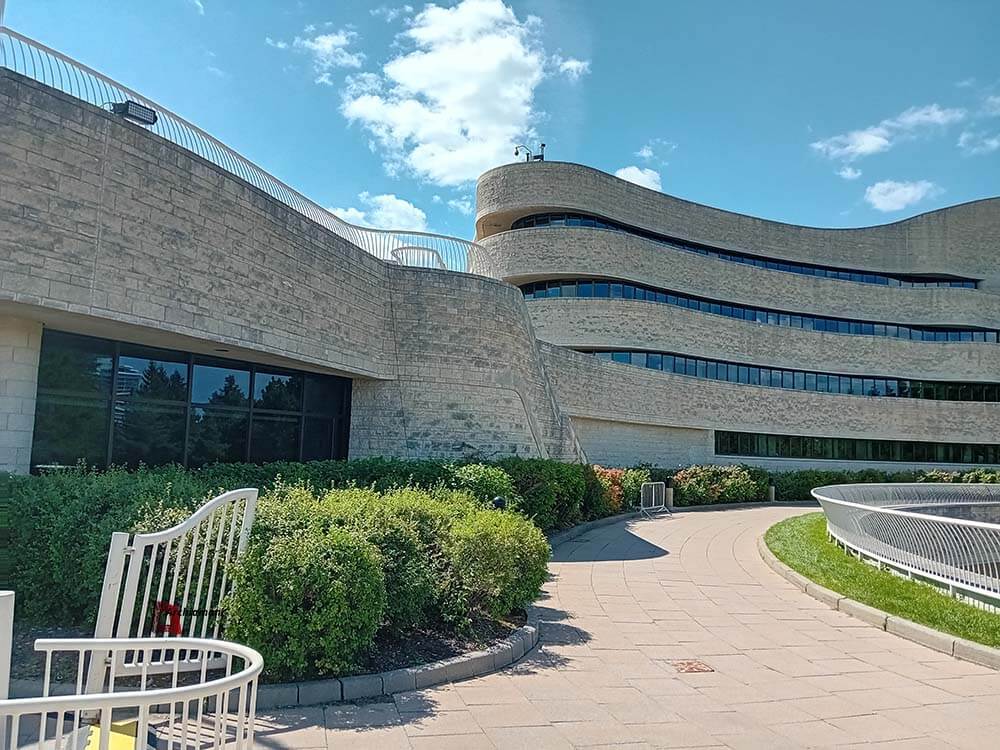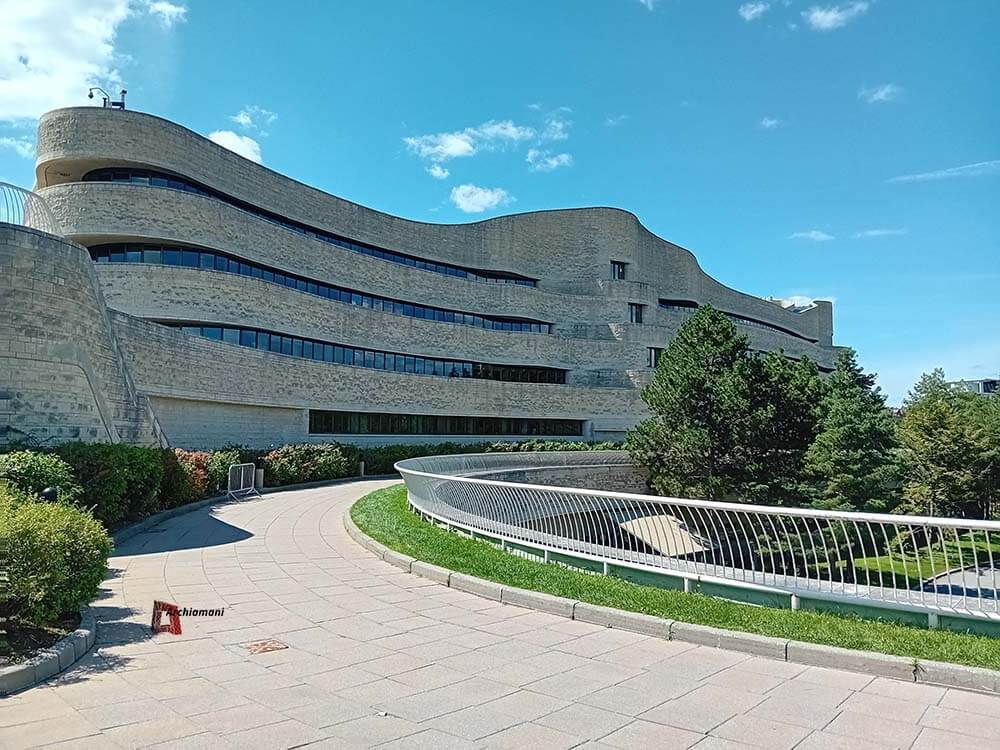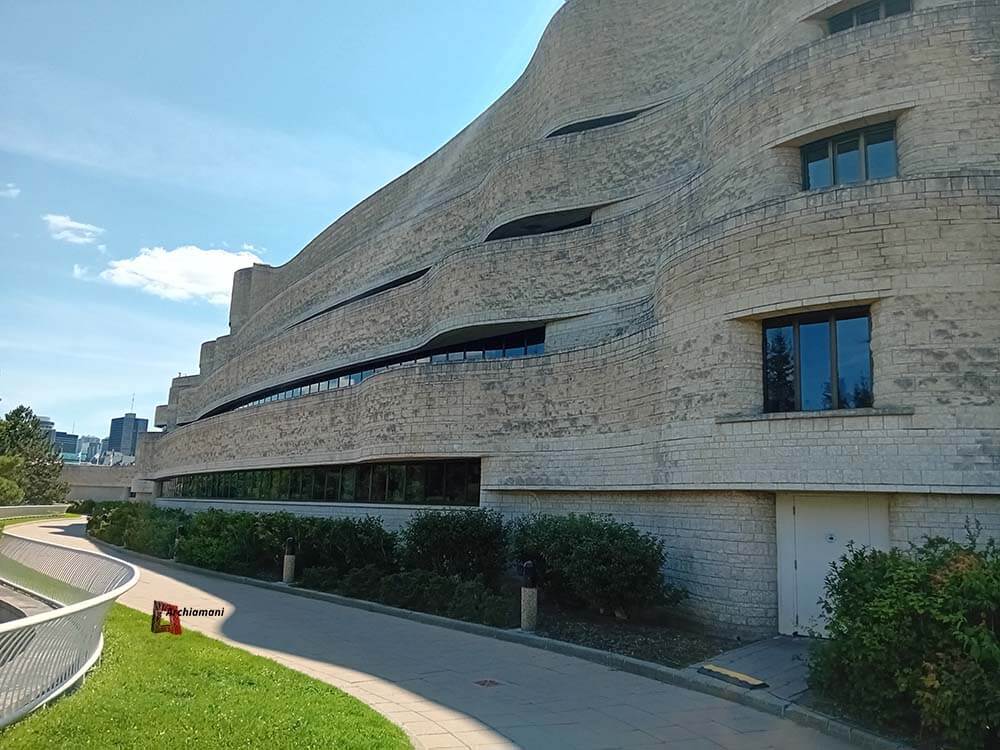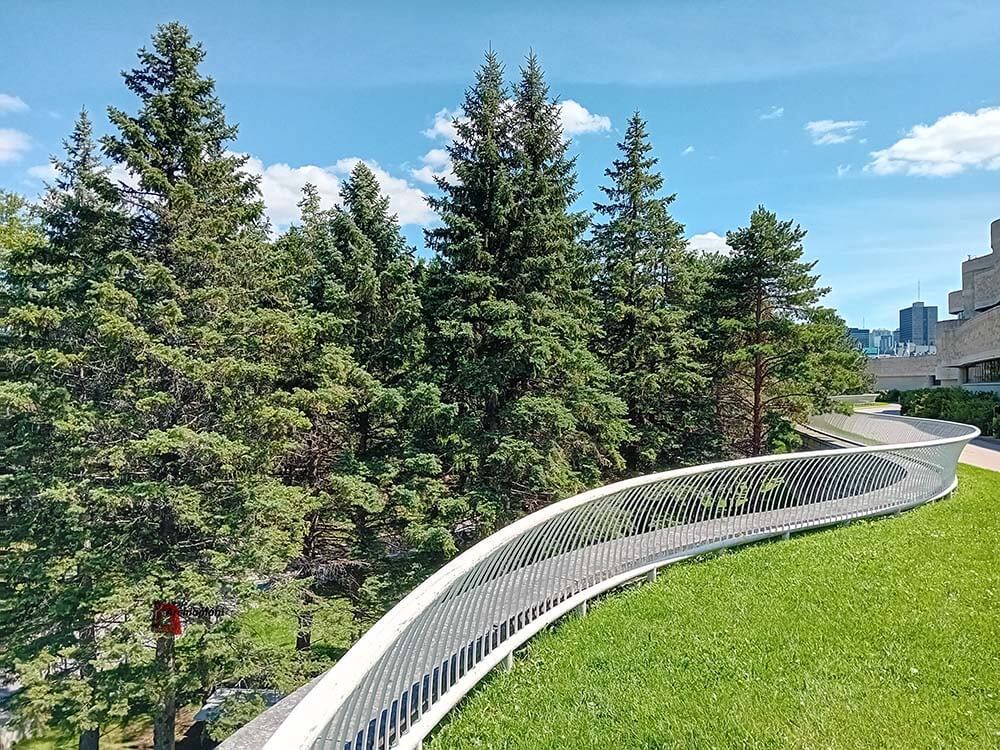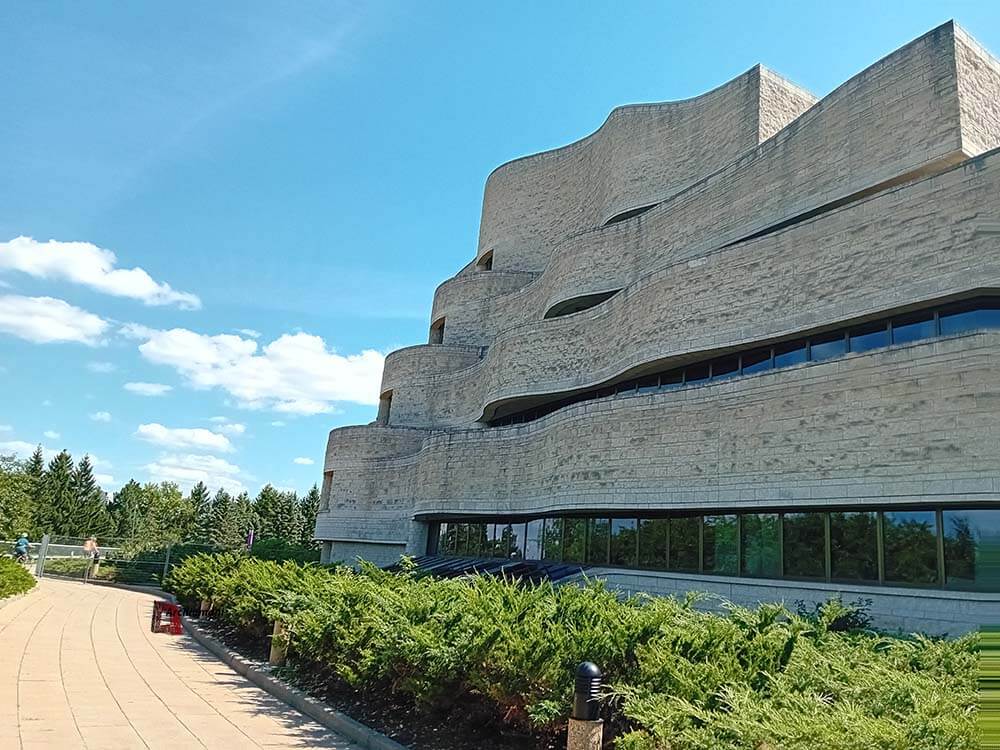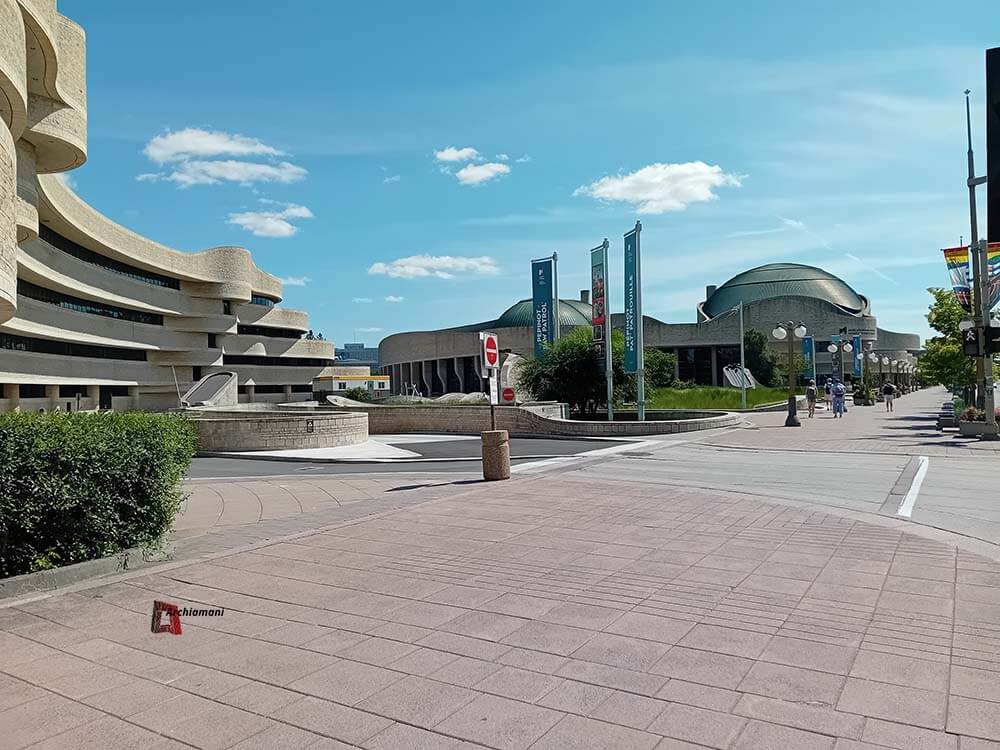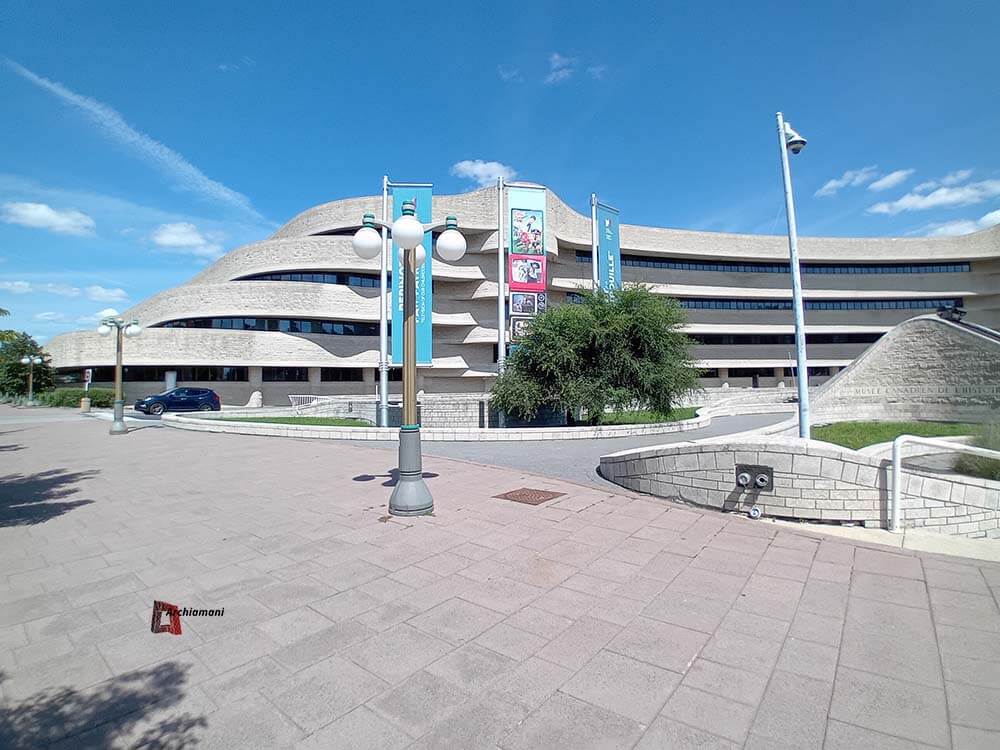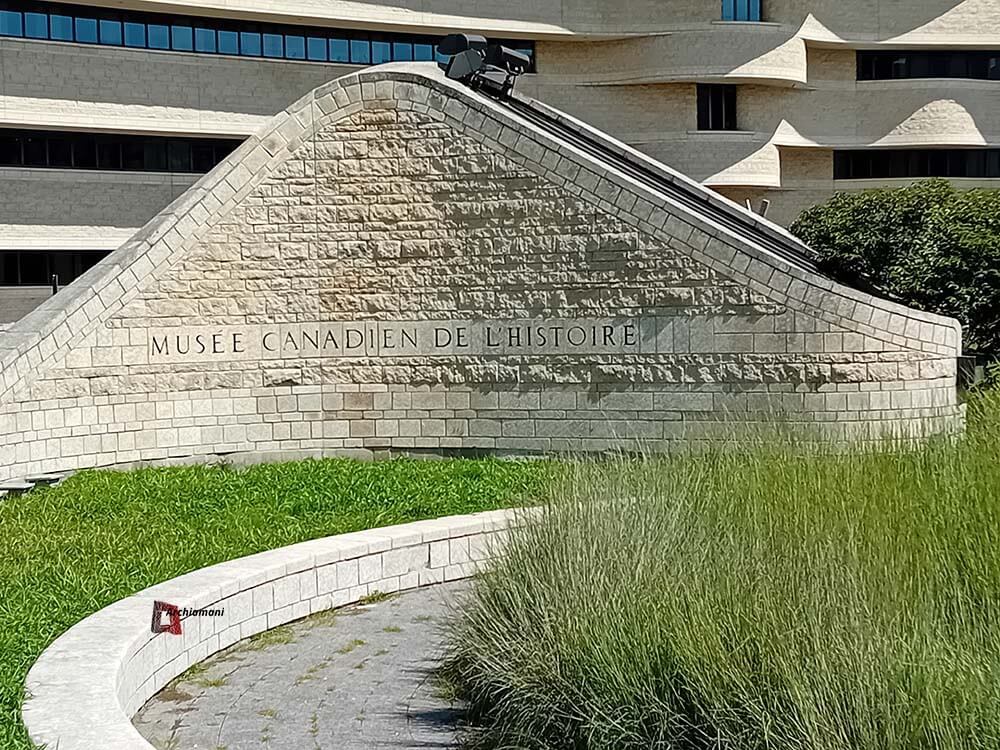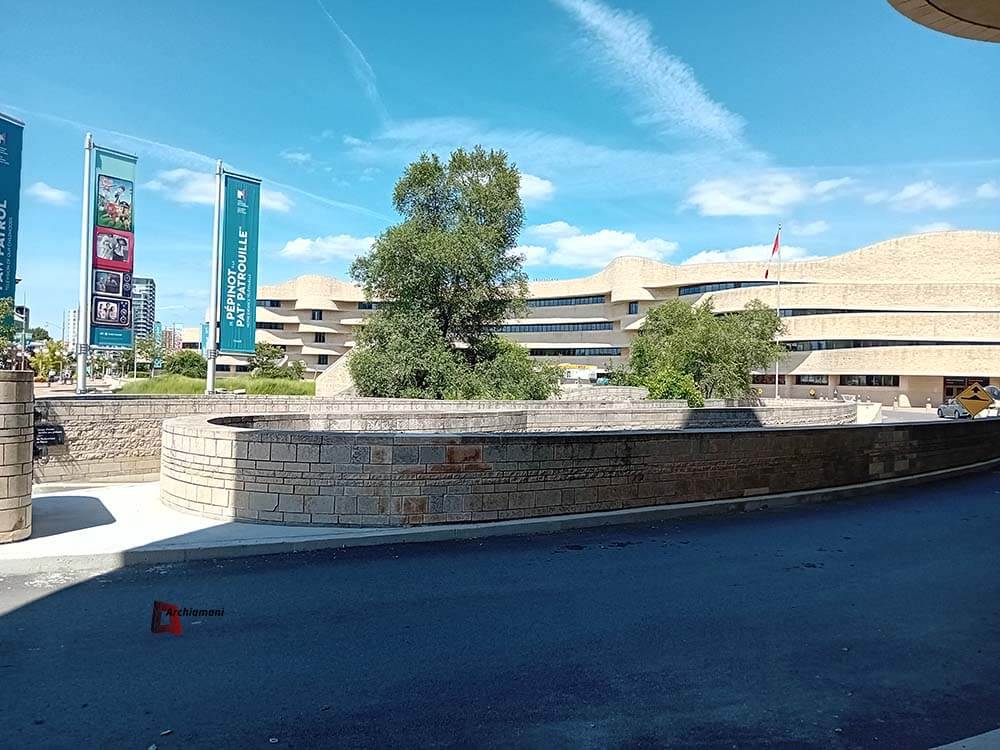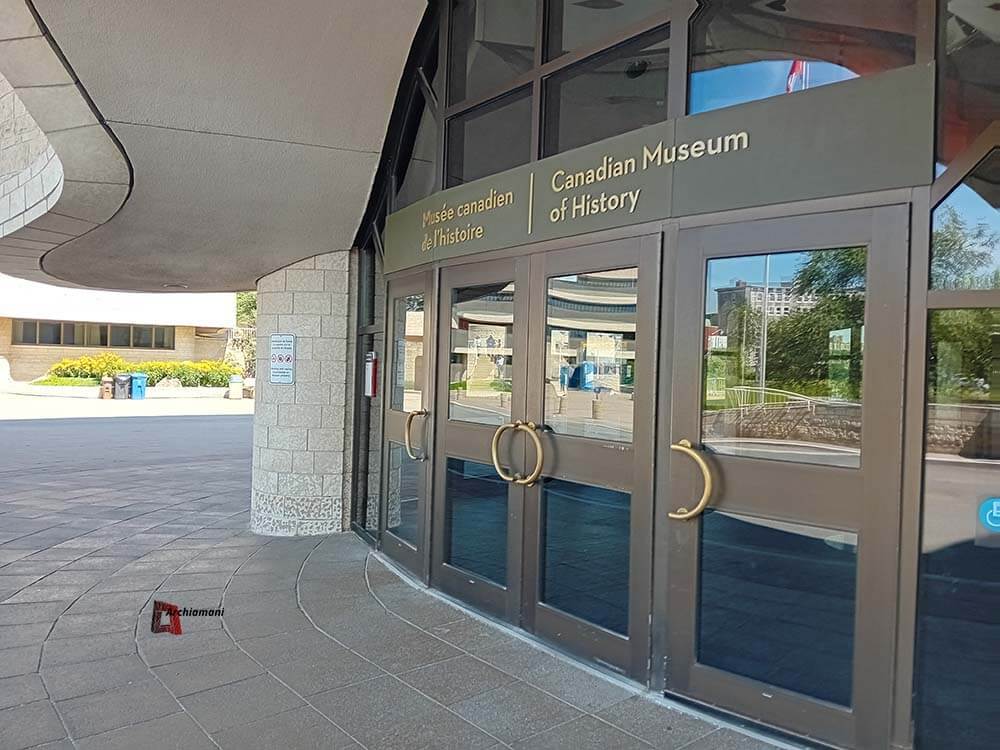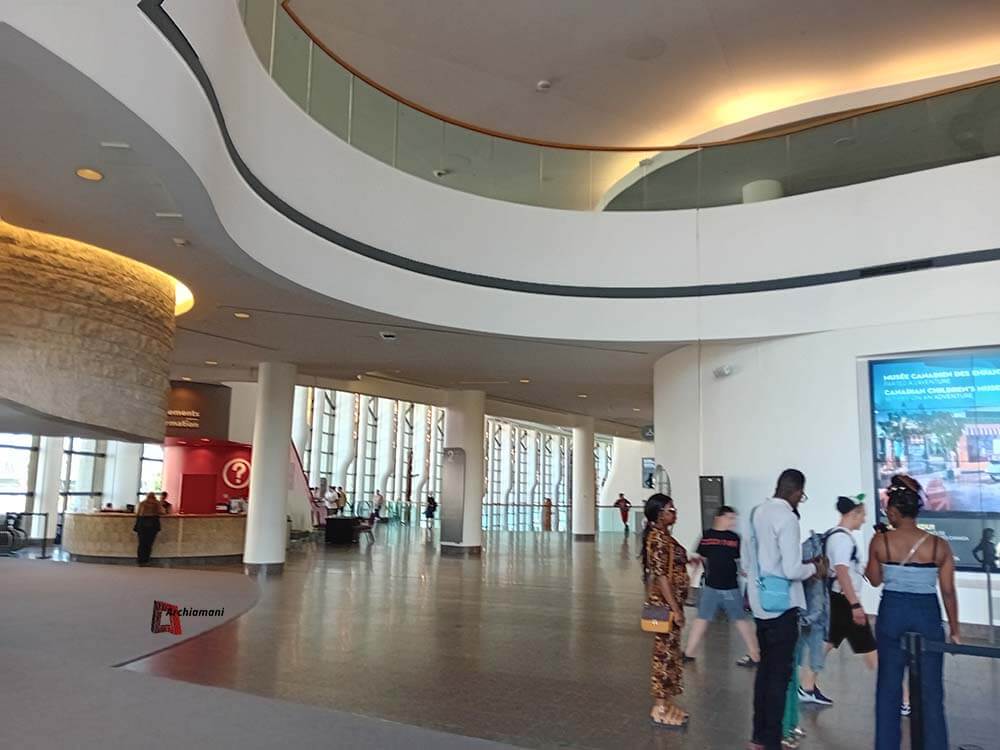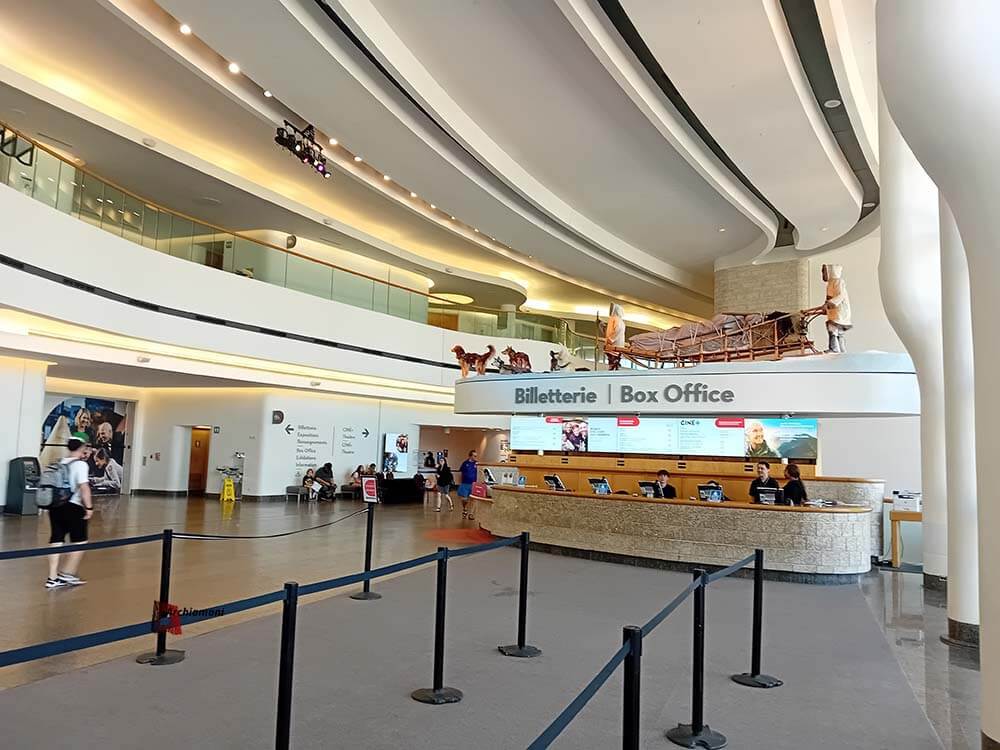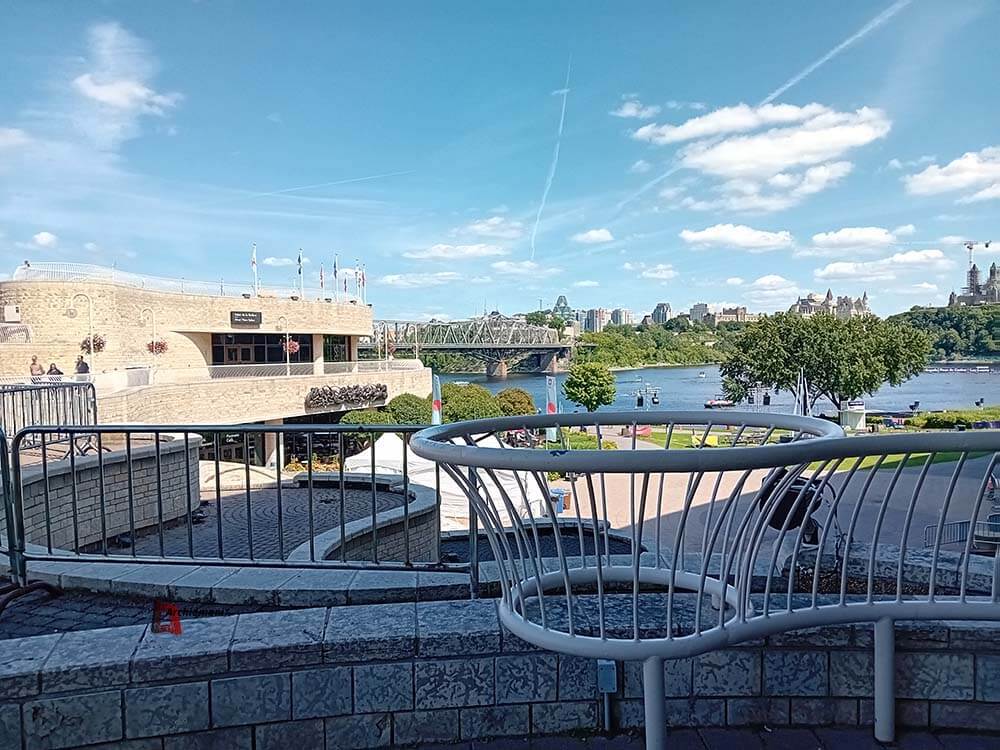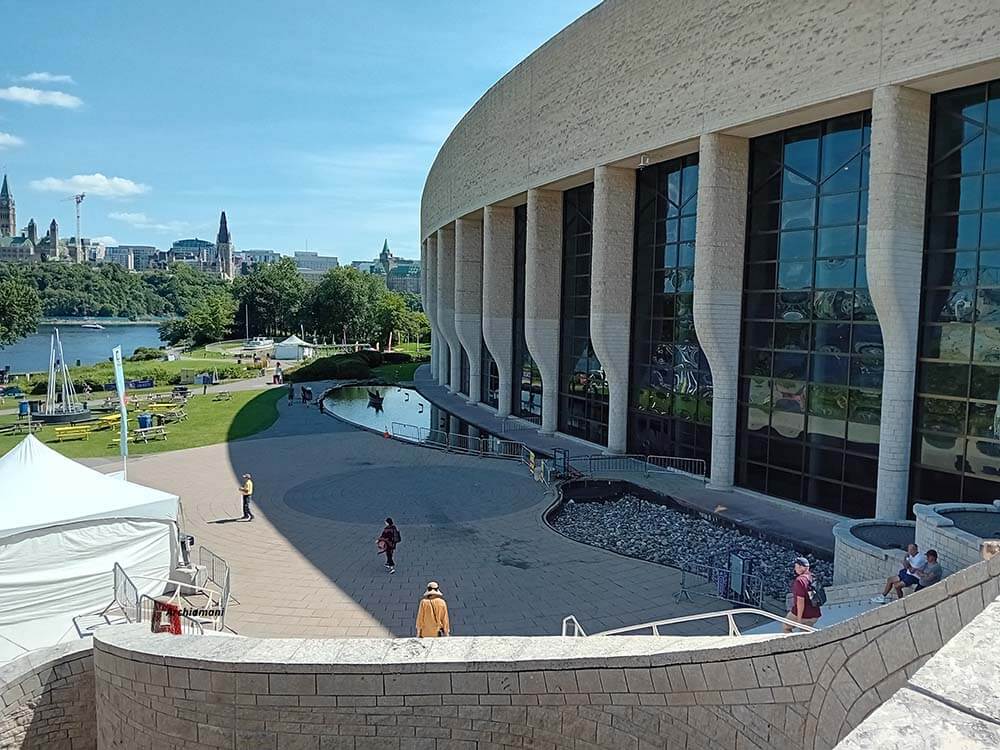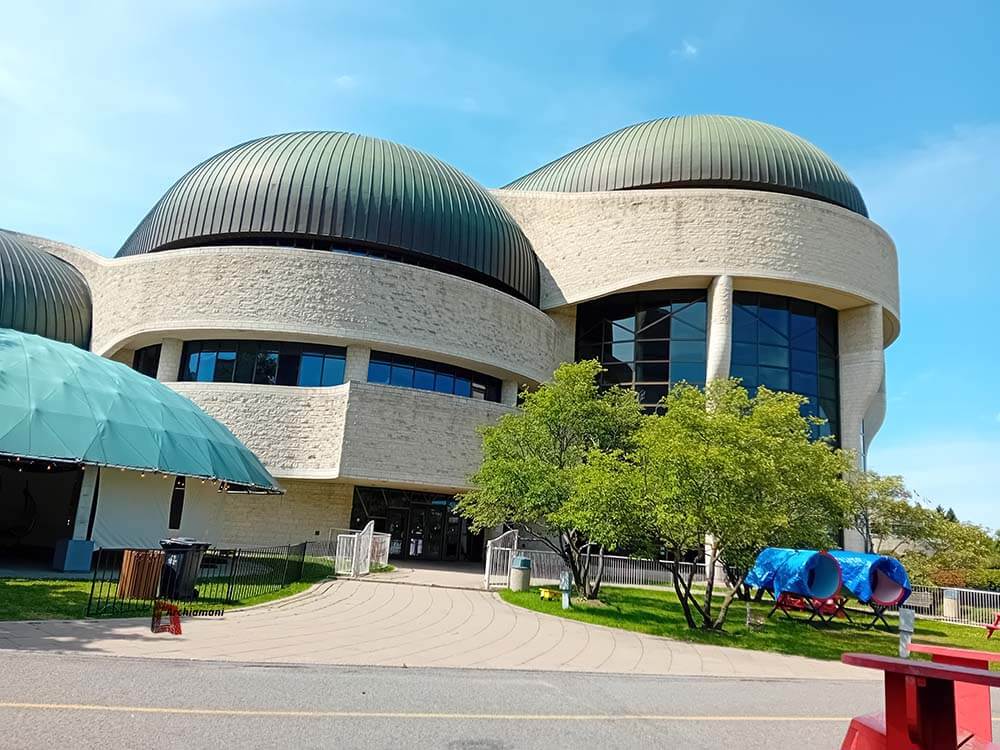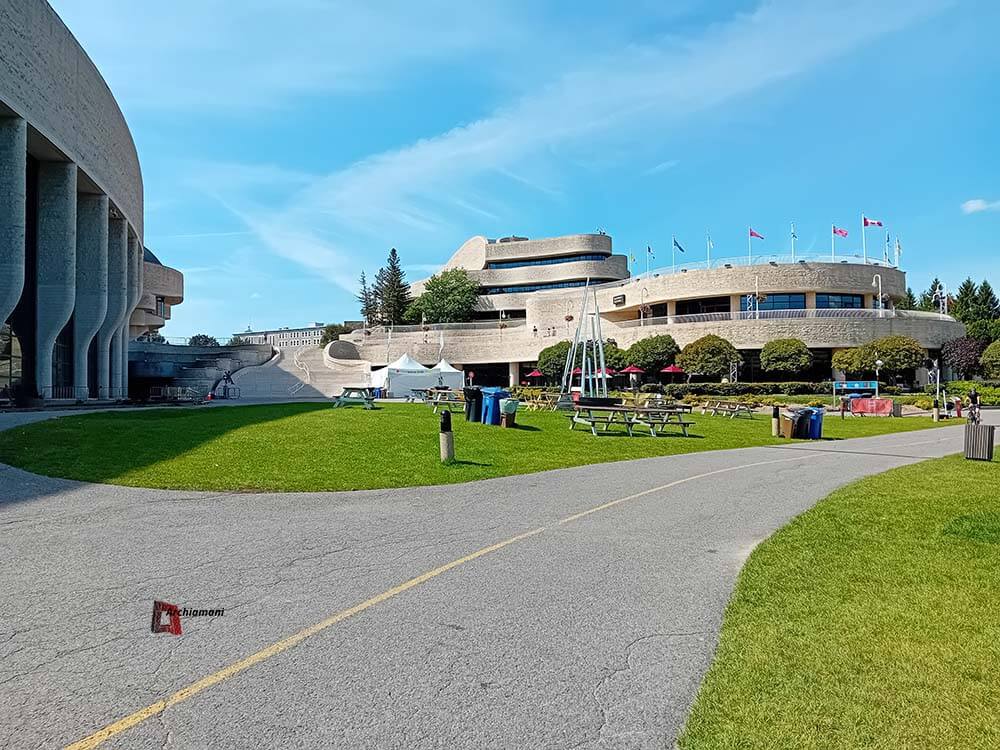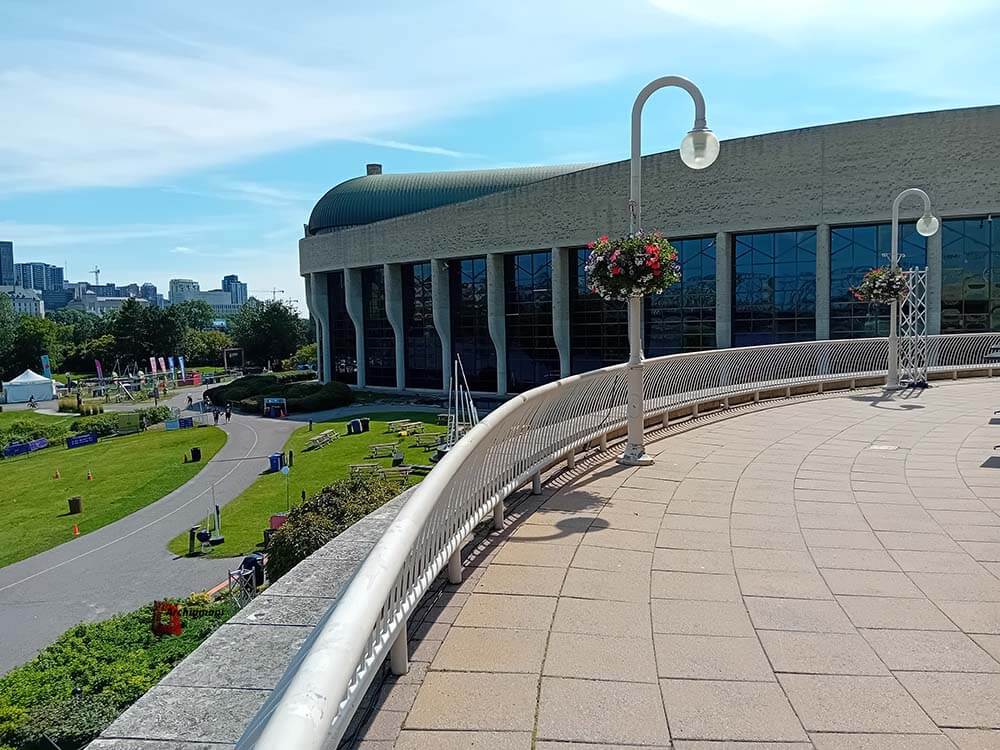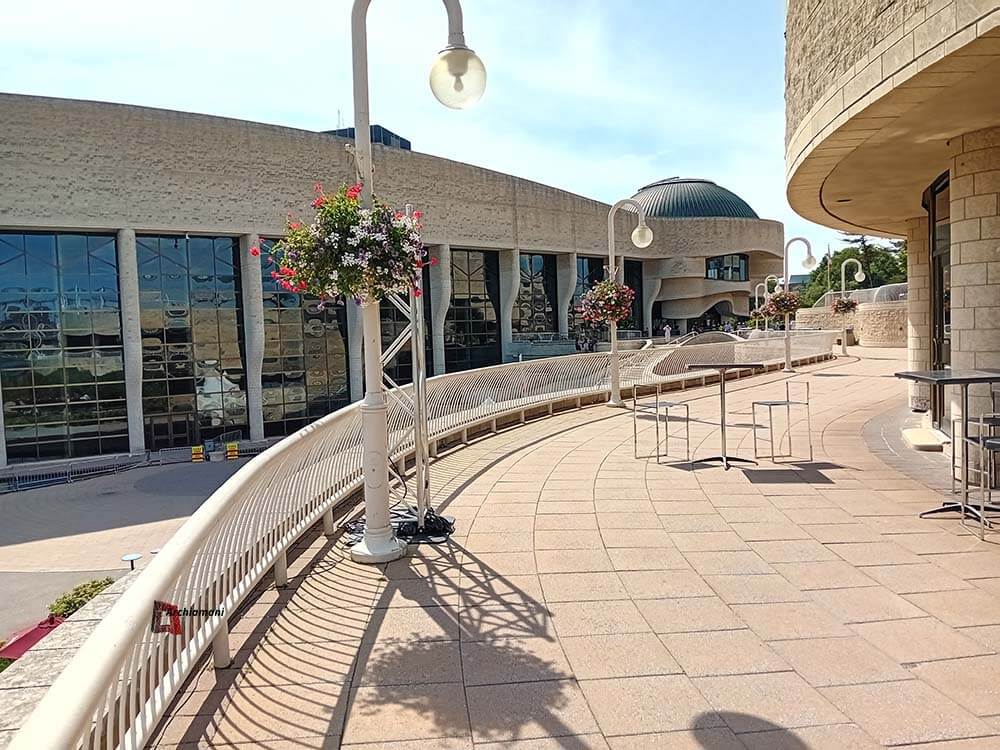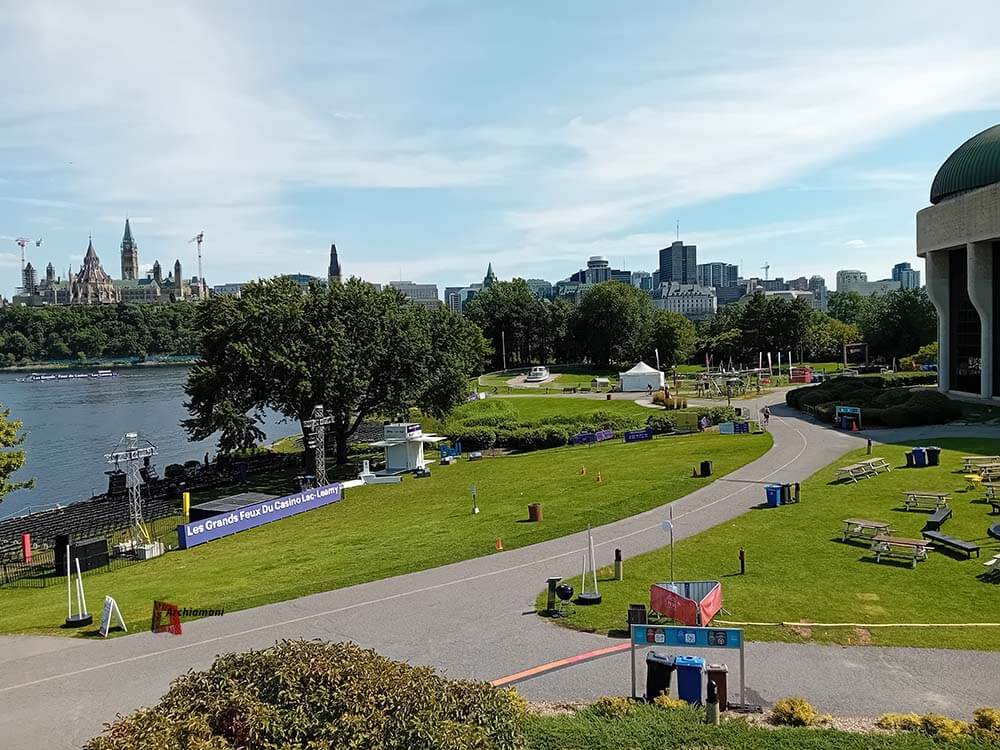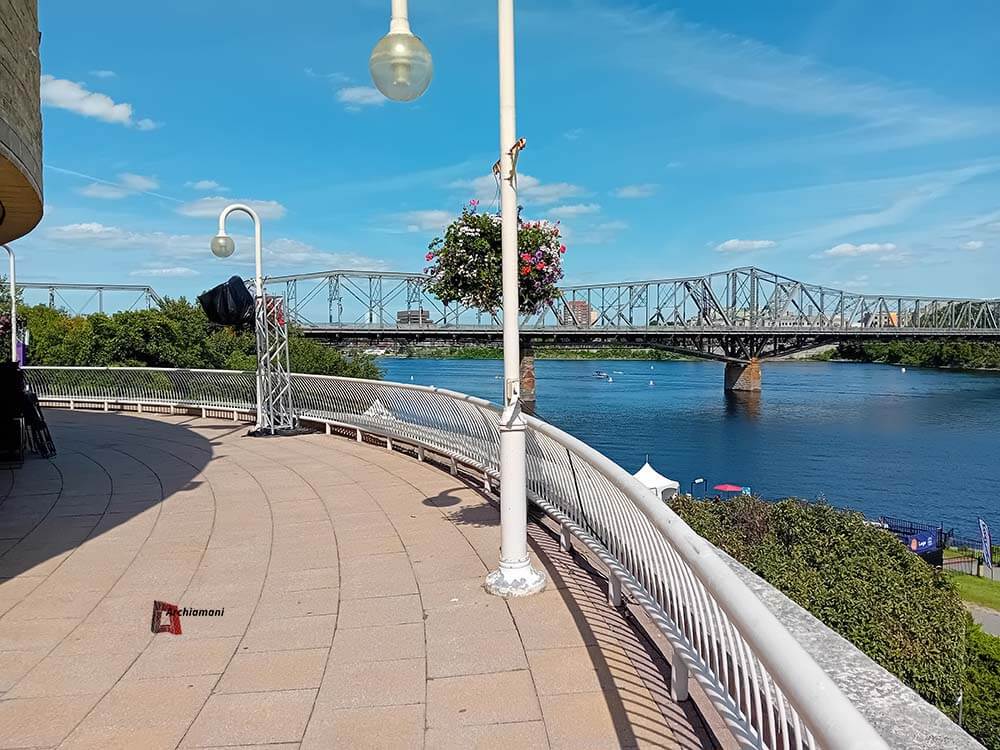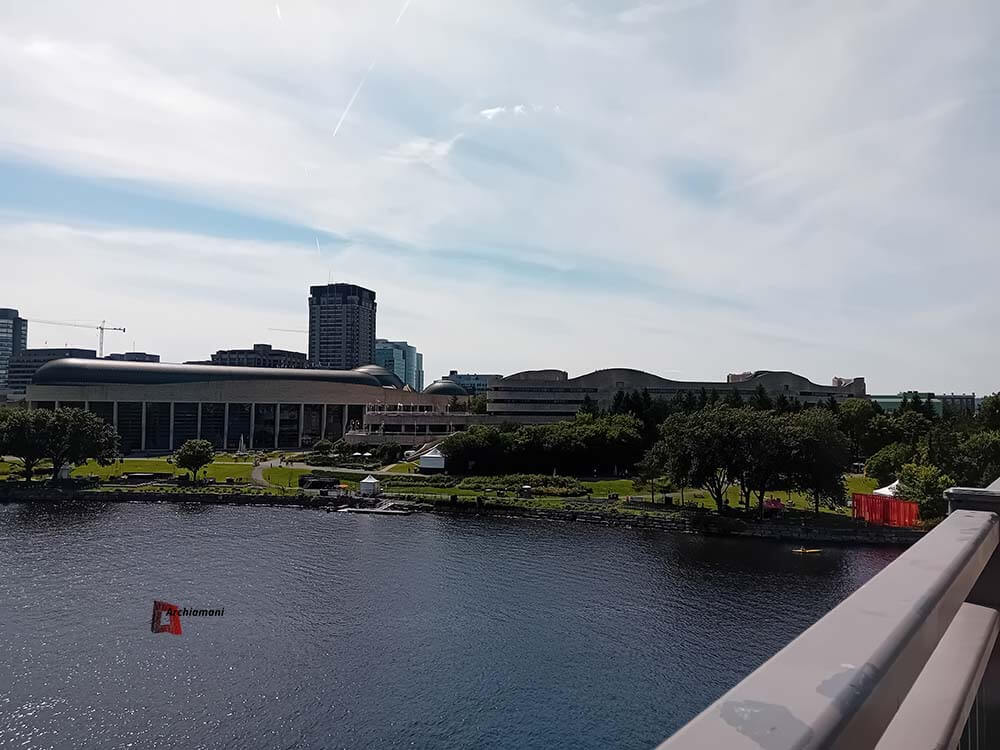Location: Gatineau, Canada
Architect: Douglas Cardinal
Year: 1982
The Museum was founded in 1856, as an exhibition hall of the Geological Survey of Canada which collected not only minerals, but also biological specimens and objects of historical and ethnological interest.
Exhibits ideal for young and old: Information-packed, stimulating experiences promise hours, if not days, of exploration. The Canadian Museum of History is the largest and most popular cultural institution in Canada.
Here are the exhibitions that await you:
The Grand Hall pays homage to the rich cultural heritage of the First Peoples of Canada’s west coast. Each of the six houses in the Grand Hall features an Indigenous community living along the coast of British Columbia.
The First Peoples Hall houses a panoply of artifacts, works of art, archival documents and audio-visual displays that reflect the diversity and contributions of the First Peoples of Canada, from their origins to the present day.
The Canadian Postal Museum illustrates the history of postal communications in Canada and around the world.
Canadian History Hall; you will discover a new emblematic exhibition reflecting Canada and its history, from the first human settlements to the present day.
Originally based in Montreal, the Museum was transferred to Ottawa in 1881. In 1910, on the recommendation of Franz Boas, anthropologist and linguist Edward Sapir was appointed as the first anthropologist of the newly created division of Museum anthropology. Soon after, the Museum recruited anthropologists Diamond Jenness and Marius Barbeau.
In 1910, it became the National Museum of Canada and moved to a brand new building, the Victoria Memorial Building, located on Metcalfe Street in downtown Ottawa. At the time, the “National Gallery of Canada”, which has since become the National Gallery of Canada, occupied half a floor of the building. In 1968, the Museum was split into two, the Canadian Museum of Nature on the one hand and the Musée de l’Homme on the other, both of which remained very cramped under the same roof. In 1982, the government led by Pierre Trudeau announced that the Musée de l’Homme would move to a new building dedicated to it, in what was still Hull, but is now Gatineau.
To avoid criticism that the name Musée de l’Homme could be interpreted as being sexist, a competition was launched in 1986. This is how the National Museum of Man became the Canadian Museum of Civilization. In 1989, the Museum took possession of its new premises. By this time, the costs, originally estimated at around $80 million, had reached the astronomical sum of approximately $340 million. Despite criticism from all quarters (including Brian Mulroney’s Conservative government) of what was seen as the Museum’s transformation into a Disney-like attraction, its exorbitant price, its groundbreaking architecture and the incompleteness of the rooms, the Museum quickly became a major tourist attraction where the various political parties saw a national symbol of “the multicultural and pluralist society”.
On Tuesday, October 16, 2012, Stephen Harper’s Conservative government changed the name of the Canadian Museum of Civilization to the Canadian Museum of History and amended its mandate to emphasize the country’s history. In response, some fear “that Canadian history will become manipulated or become the subject of political discourse. In total, the cost of this name change will amount to more than $500,000.
As a result of this new status, the oil sands industry becomes an “official partner” of all the special exhibitions presented by the establishment in exchange for an annual grant of $200,000 per year, between 2013 and 20187.
Currently attracting more than 1.3 million visitors per year, it is the busiest museum in Canada.
